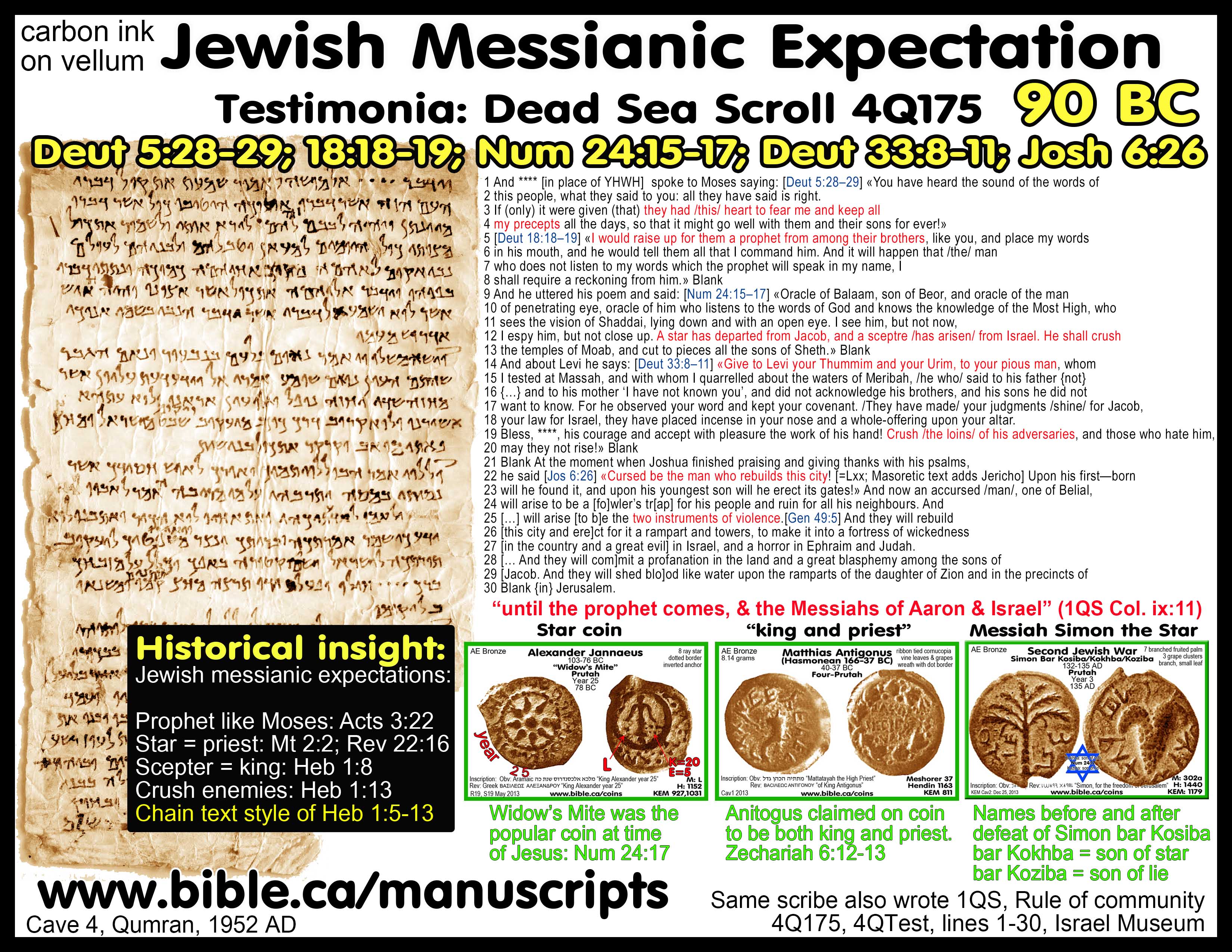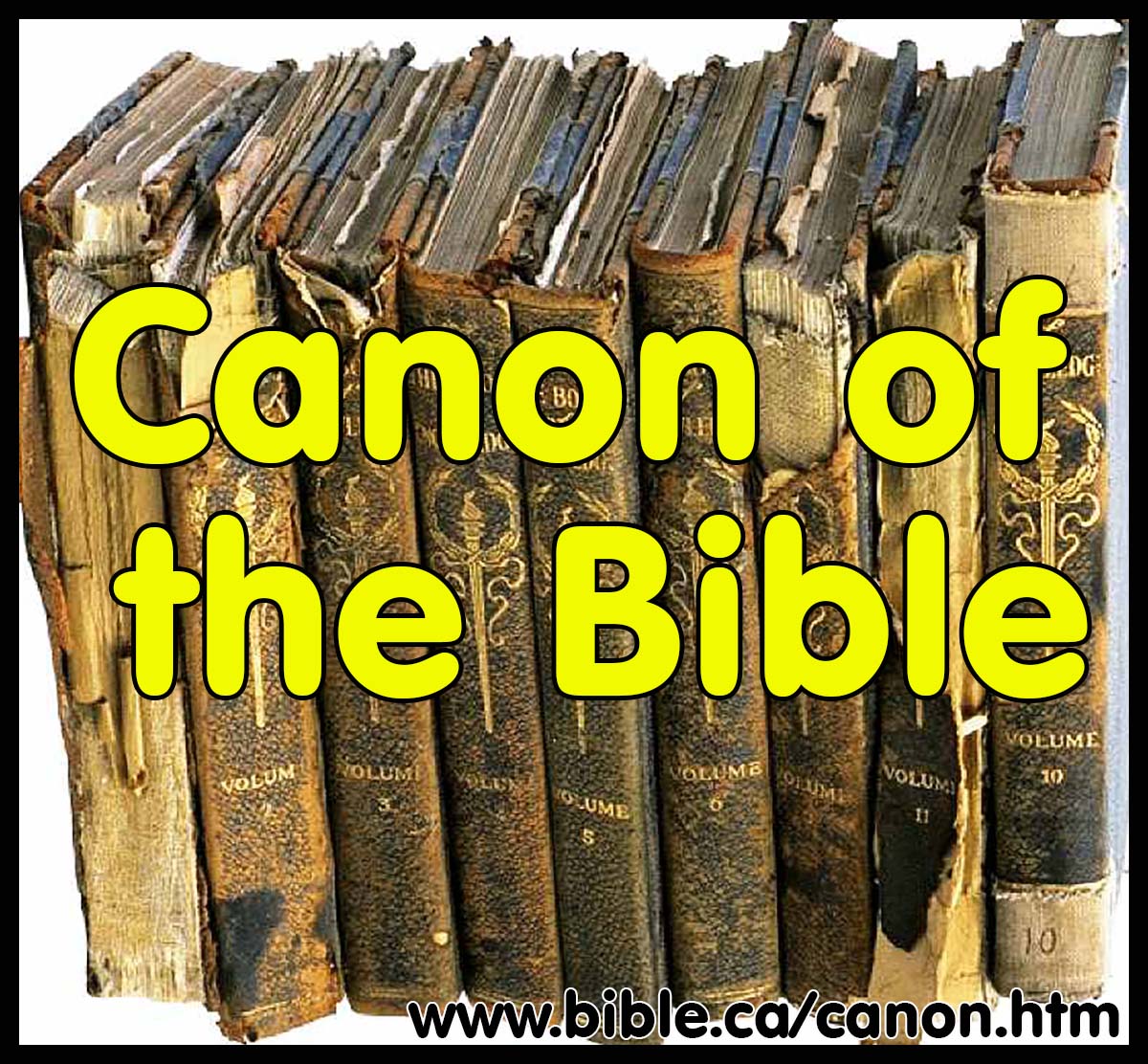|
"Nomina Sacra" The substituting of shortened abbreviations for special words A conservative, bible believing perspective! |
God's providence gave us the 27 book New Testament Canon, not the church. God, not men decided the canon. This providence does not mean that church leaders were inspired in their selecting the canon, only that God had his eye on the scriptures the whole time and brought about His will to form the Bible we see today!
|
|
"Nomina Sacra" The substituting of shortened abbreviations for special words |
"Nomina Sacra": The substituting of shortened abbreviations for special words
Introduction:
- "nomina sacra" means: "sacred names"
- The actual form was like this: Instead of writing "Jesus" they would write: "J-s", where the dash was above, rather than as we have shown it in the middle.
- It was an abbreviation, not a substitution or replacement of one word for another.
- "Nomina sacra" was a Jewish practice that is witnessed in the dead sea scrolls adopted by the Christians.
- Dead Sea Scroll (4Q175 or 4QTest) uses "Nomina sacra" and replaces the name of God (tetragrammaton) YHWH for four stars "****". The other DSS below (4Q174-4QFlorilegium) fully spells out the name of God.
- See
full outline on Jewish
Messianic expectation

- The document is in Greek expect for Mosaic Hebrew (Paleo-Hebrew) where they wrote the name of God YHWH in the extinct Hebrew alphabet.
- Other documents (Like 4Q175) found at the same time would use four stars **** as an early “nomina sacra” substitution.
- This substitution of Mosaic Hebrew for Greek in the name of God is probably the very beginning point of “nomina sacra”.
- Nomina sacra developed into the Christian era and became almost ridiculous because they would create substitutional abbreviations for other “sacred” things including: God, Father, Son, Holy Spirit, Saviour, Cross, Christ etc.
- While Christians eventually abandoned the practice of nomina sacra altogether, the Jews continue the practice by writing the word God in English as G-D where a dash is substituted for the letter O.
- Of course the ultimate substitution was provided by the Holy Spirit himself in the 27 books of the New Testament that consistently substitute KURIOS (Greek for “Lord”) for YHWH in all Old Testament quotations in the New Testament.
- Examples of Nomina Sacra abbreviations for special words:
- Jesus
- Christ
- Son
- God
- Lord
- Spirit
- Savior
- David
- Cross
- Mother (with reference to Mary)
- Father
- Israel
- Man
- Jerusalem
- Heaven.
Discussion:
- The external identifying characteristics of the witnesses to the text of the Christian Bible-the types of abbreviation of the nomina sacra, use of the codex, a common pattern of names for the individual books ("Gospel according to . . . "; "General Epistle of. . . "; "Epistle of Paul to . . ."), and a uniform name for the two parts of the whole collection ("New Testament" and "Old Testament")-all go back to the earliest stage of transmission. They show the work of a single redactor who produced the canonical edition of the New Testament as part of a total Christian scripture . (Lee Martin McDonald, James A. Sanders, Editors: The Canon Debate; Everett Ferguson, Factors Leading to the Selection and Closure of the New Testament Canon, p 311, 2002)
- Recently David Trobisch proposed that a second-century editing process produced and published the twenty-seven-book New Testament we have today, in the order: Gospels; Acts and the Catholic Epistles; fourteen letters of Paul, with Hebrews located between 2 Thessalonians and 1 Timothy; and Revelation. Evidence is found in the choice of authors to whom New Testament books are ascribed, in editorial remarks in the New Testament writings themselves (including in Acts, 2 Timothy, 2 Peter, and John 21), in the widespread use of the nomina sacra in early manuscripts of the New Testament, and in the codex form. I mention Trobisch's proposal here, as I mentioned above the consensus view that the New Testament canon was in place in the late second century, only to ask how what we discover in Eusebius a century and a half later might challenge or support such views. (Lee Martin McDonald, James A. Sanders, Editors: The Canon Debate; Everett R. Kalin, The New Testament Canon of Eusebius, p 389, 2002)
- Although the individual gospels do not contain the names of their authors, it is probable that the inscriptions naming them (for example, "According to Mark") were attached as soon as people knew about more than one gospel, or at latest when they were published together in a codex. T. C. Skeat has suggested that Christians adopted the codex in order that they could copy the four gospels together. The consistent system of abbreviating certain words (nomina sacra, fifteen in total) in Christian biblical codices points to the likelihood of recessions, i.e., editions of the New Testament that aimed at a standardized text for Christian worship. This may have happened in the second century, and at latest in the third century. (Lee Martin McDonald, James A. Sanders, Editors: The Canon Debate; Peter Balla, Evidence for an Early Christian Canon: Second and Third Century, p 376, 2002)
- Barton has observed that when nomina sacra (sacred names that are abbreviated or contracted in the ancient biblical manuscripts) appear in ancient manuscripts, those manuscripts were considered sacred. The nomina sacra included important names such as Jesus, Father, Son, Christ, Holy Spirit, Savior, and such like. The fact that early Christian scribes contracted special words from both the Old Testament and the New Testament suggests that they viewed both collections as sacred in the same sense." (Lee Martin McDonald, James A. Sanders, Editors: The Canon Debate; Lee Martin McDonald, Identifying Scripture and Canon in the Early Church: The Criteria Question, p 421, 2002)
- "The use of nomina sacra was not limited to the writings which we recognize as the New Testament. For example, in the Shepherd of Hermas (included in Codex Sinaiticus), first leaf first column, I see three occurrences- qeou (of God) abbreviated as QU in line 30, pneuma (spirit) abbreviated as PNA in line 35, and anqrwpoV (man) abbreviated as ANOS in line 38. (In the earliest manuscripts, S = s = V was written with the appearance of our letter "C".) There are more occurrences in each of the remaining columns." Jeff Smelser
By Steve Rudd: Contact the author for comments, input or corrections.

